Crafting a letter to outline subcontractor supplemental requirements can be crucial for smooth project progression. It's important to communicate expectations clearly to ensure all parties are on the same page and fully understand the necessary guidelines. By detailing these requirements, we foster collaboration and minimize misunderstandings, paving the way for successful project completion. Ready to dive deeper into effective communication strategies? Let's explore further!

Project Scope and Expectations
Subcontractor agreements serve as a vital component in large construction or service projects, detailing essential project scope and expectations. Clearly defined project boundaries outline specific tasks, materials, and timelines necessary for successful completion of the contract. Supplementary requirements may include adherence to safety regulations, specified quality standards, and compliance with local building codes, such as the International Building Code (IBC) or Occupational Safety and Health Administration (OSHA) guidelines. Expectation management promotes accountability through regular progress reports and inspection checkpoints, ensuring that all parties are aligned with the project milestones. Furthermore, communication protocols established in this context foster collaboration, minimizing misunderstandings and enhancing project efficiency.
Compliance with Standards and Regulations
Ensure adherence to industry standards and regulations when executing work on projects, such as the Occupational Safety and Health Administration (OSHA) standards, which mandate workplace safety protocols. Compliance with local building codes, like the International Building Code (IBC) requirements, is essential for structural integrity and safety. Environmental regulations, including the Clean Air Act and the Clean Water Act, must also be followed to prevent pollution. Regular inspections by accredited agencies ensure that all activities align with the necessary legal and safety frameworks, fostering accountability and quality assurance throughout the project. Additionally, certifications from recognized bodies, such as the ISO 9001 for quality management, bolster credibility and demonstrate commitment to excellence in subcontractor operations.
Quality and Safety Protocols
Quality and safety protocols are critical in construction projects involving subcontractors, ensuring adherence to industry standards. These protocols encompass various aspects, including regular safety training sessions and compliance with Occupational Safety and Health Administration (OSHA) guidelines, which mandate safe working environments. Specific quality control measures involve detailed inspections (at least bi-weekly), material testing in accordance with American Society for Testing and Materials (ASTM) standards, and documentation of all construction processes. Strict adherence to these protocols helps minimize workplace accidents, meet deadlines, and maintain the overall quality of the project. Furthermore, regular audits and site assessments conducted by quality assurance personnel are essential to monitor compliance and performance. Implementing robust safety measures is crucial, particularly in high-risk locations such as construction sites, which are subject to unpredictable environmental factors and heavy machinery usage.
Payment and Invoicing Terms
Clear and structured payment and invoicing terms establish crucial guidelines for subcontractors. Standard invoicing processes specify submission deadlines, typically within 30 days after project milestones, ensuring timely payments. Payment methods commonly include direct bank transfers, checks, or electronic payment systems like PayPal. Specific terms, such as net 30, net 45, or progress payments linked to completed work percent, dictate when subcontractors receive funds. Additionally, inclusion of penalty clauses for late payments (often interest rates of 1.5% monthly) encourages adherence to timelines. Proper documentation, including detailed invoices with itemized lists, can streamline verification and approval processes, reducing potential disputes. Compliance with these requirements ensures financial clarity and fosters positive contractor-subcontractor relationships.
Communication and Reporting Procedures
Clear communication protocols and reporting procedures are essential for effective subcontractor management in construction projects. Establishing specific channels (e.g., email, project management software) will enhance information exchange, ensuring timely updates. Daily or weekly progress reports, detailing milestones reached, challenges faced, and resource utilization, should be submitted consistently. Key contact persons (e.g., project manager, site supervisor) must be designated for issue resolution, facilitating efficient collaboration. Additionally, using standardized templates for reporting can streamline processes, providing uniformity and clarity in the documentation of project status. Timelines for communication and reporting (e.g., within 24 hours of significant developments) must be adhered to, fostering accountability and transparency among all parties involved.
Letter Template For Subcontractor Supplemental Requirements Samples
Letter template of project timeline and milestone expectations for subcontractors
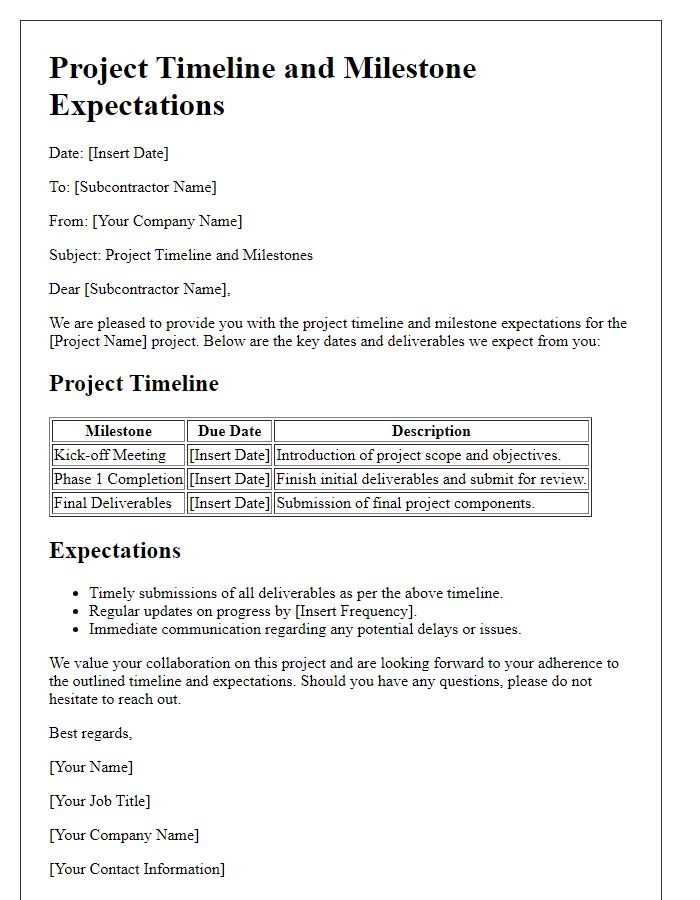

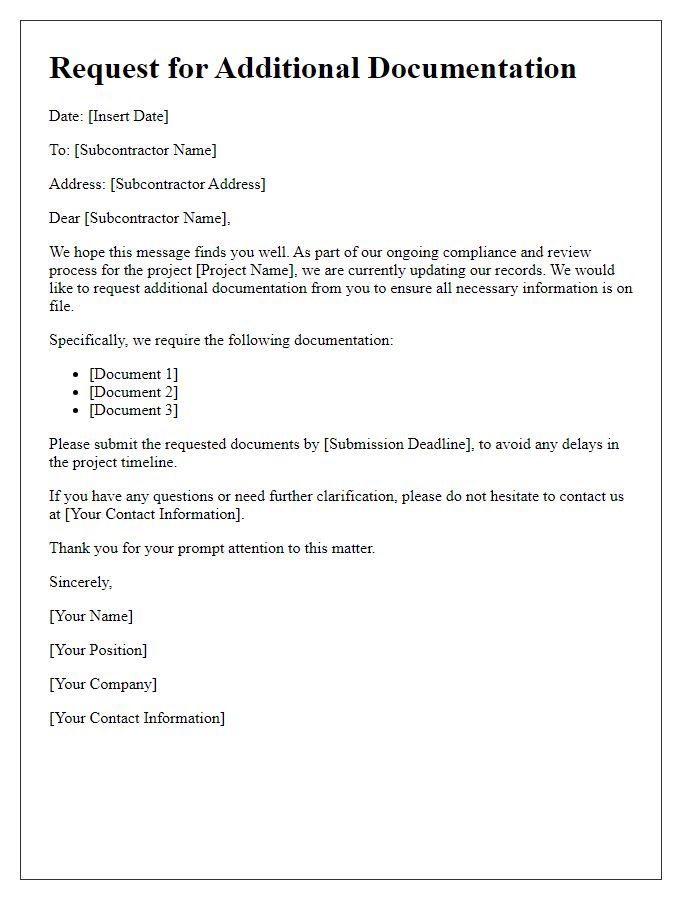
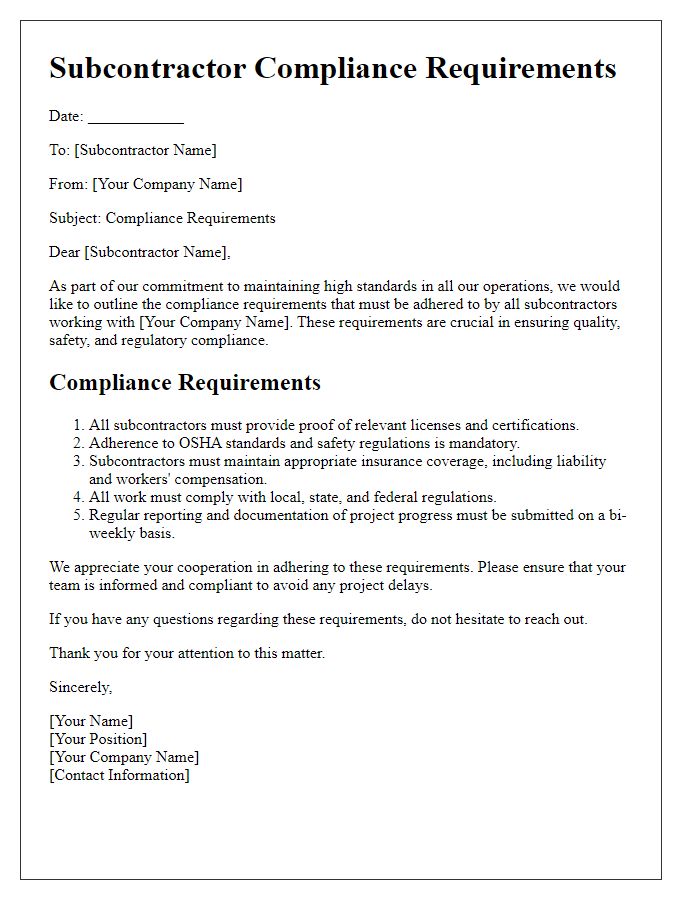
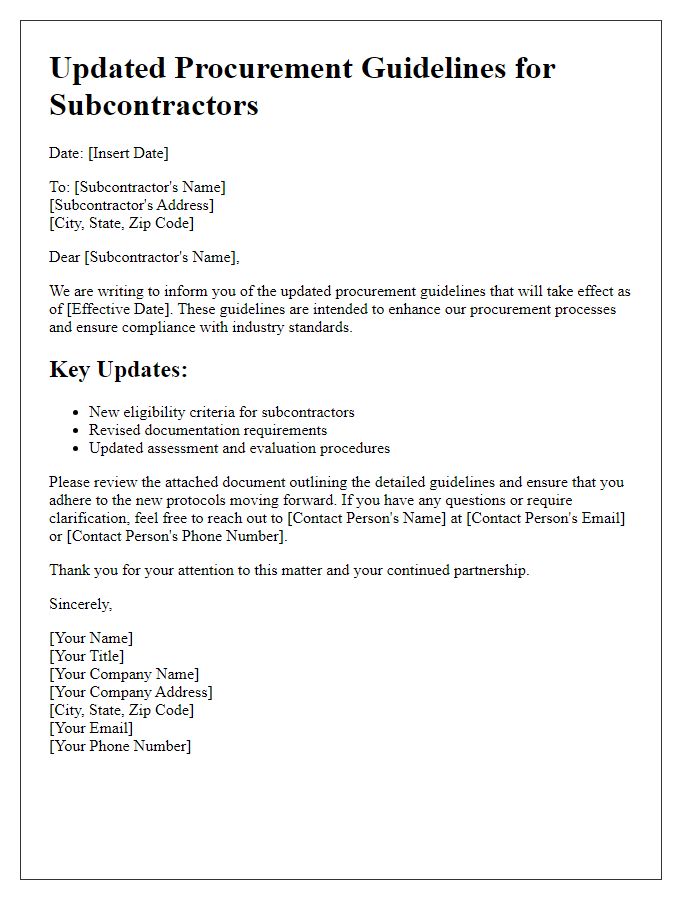
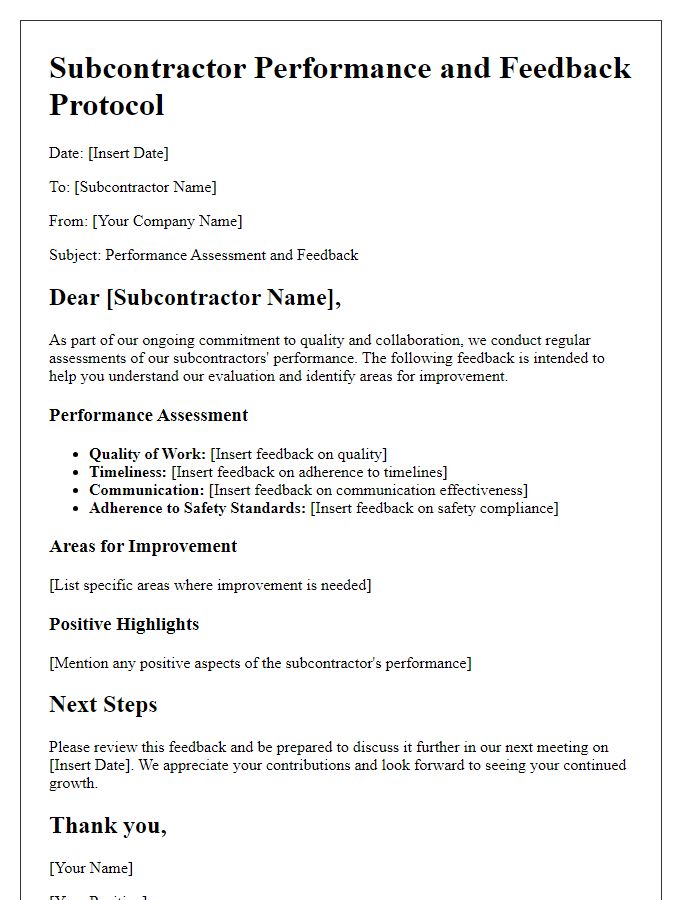
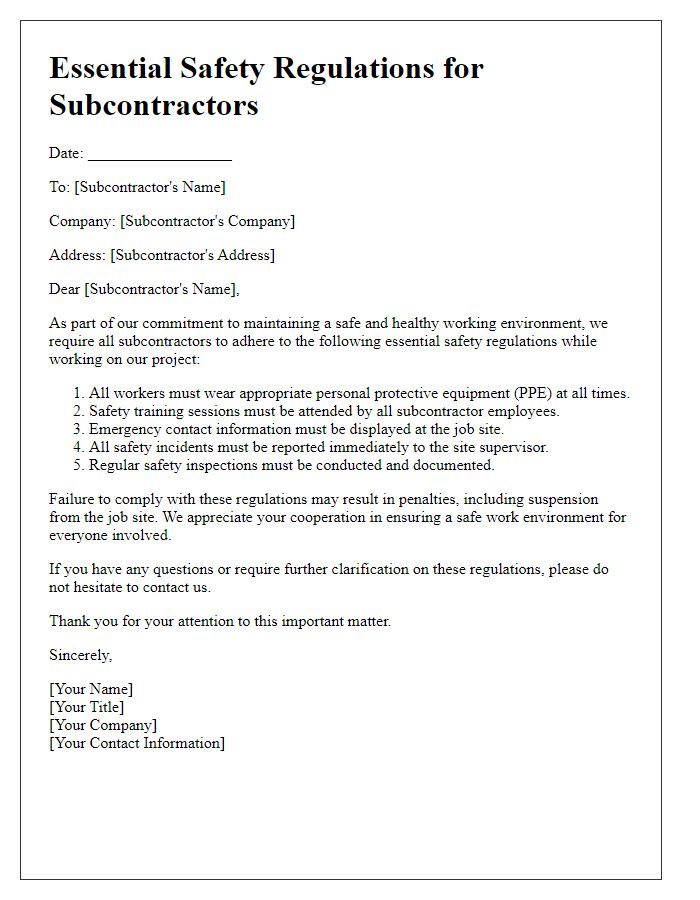
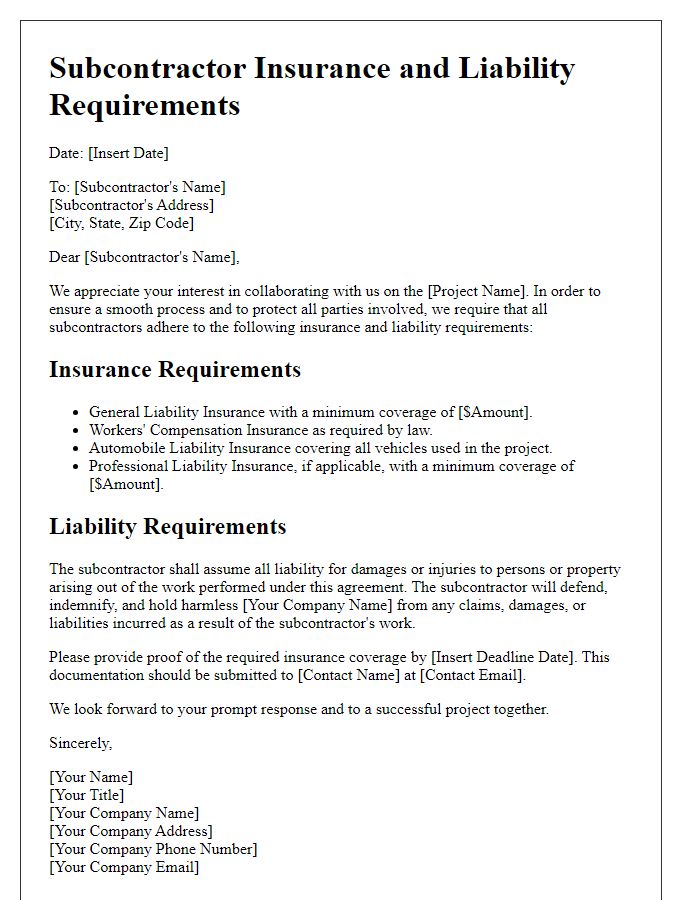
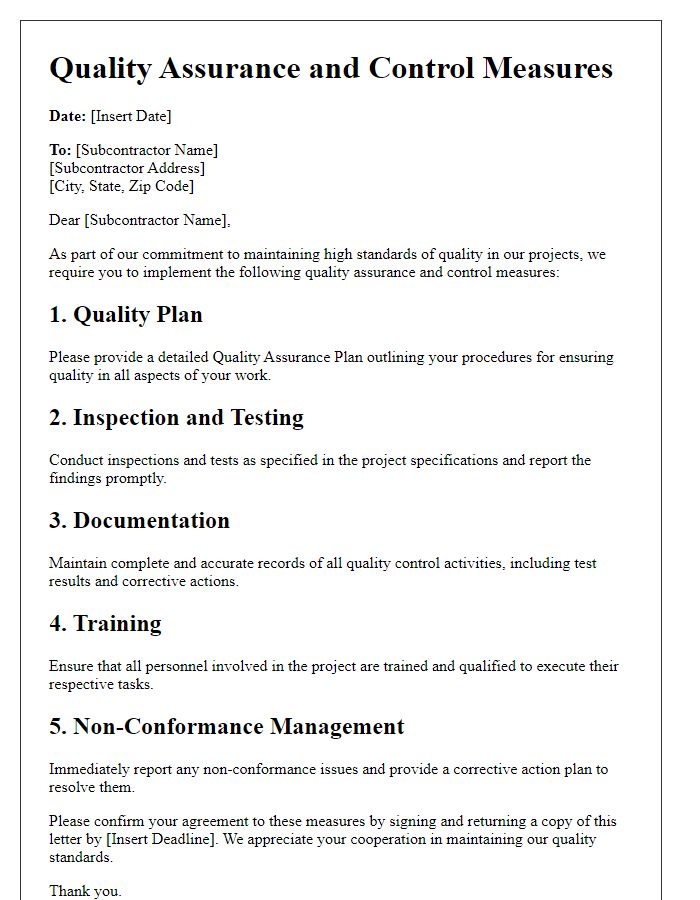
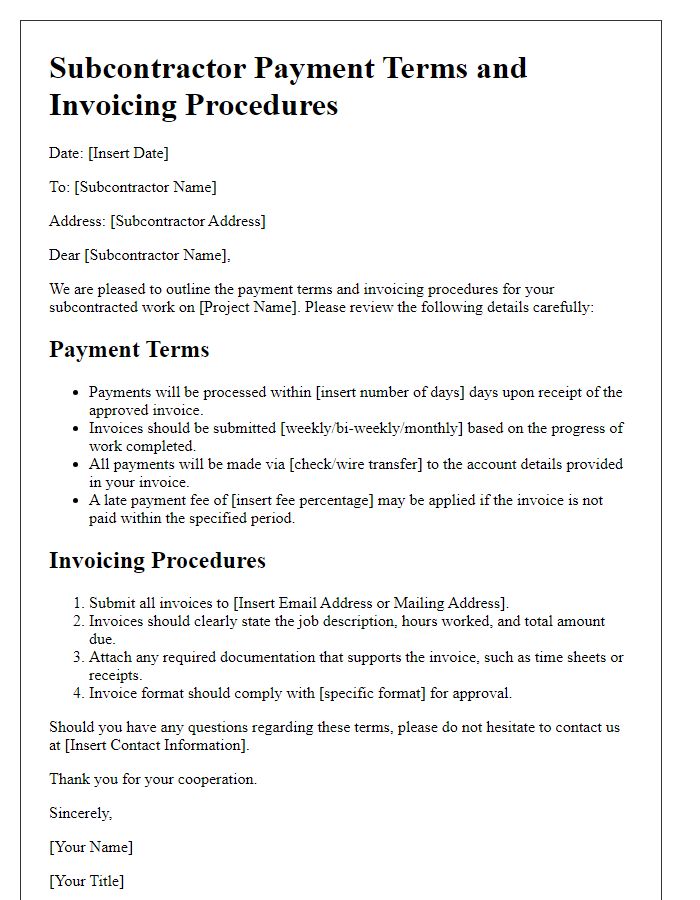
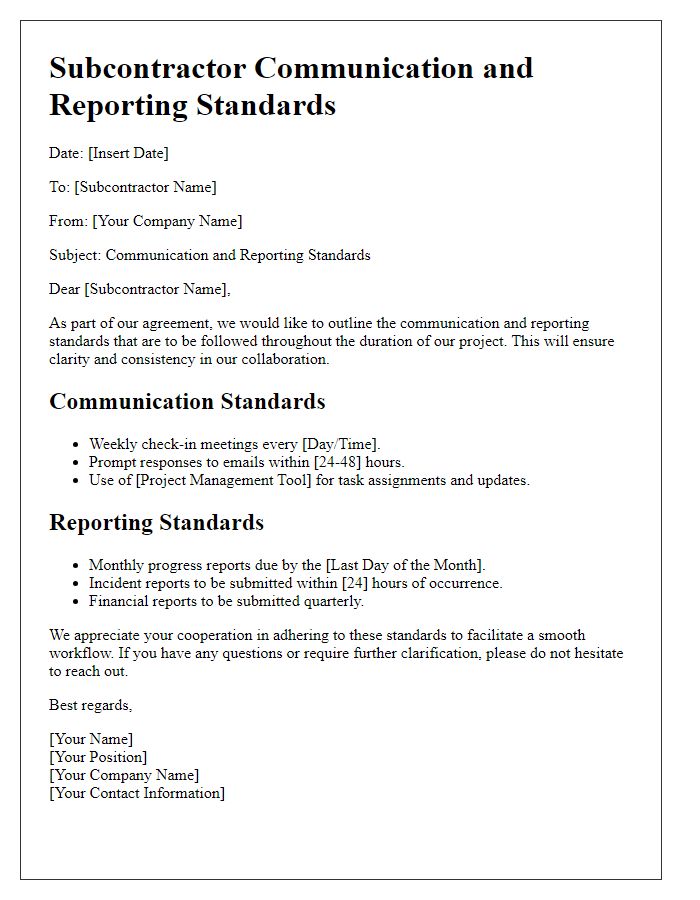


Comments